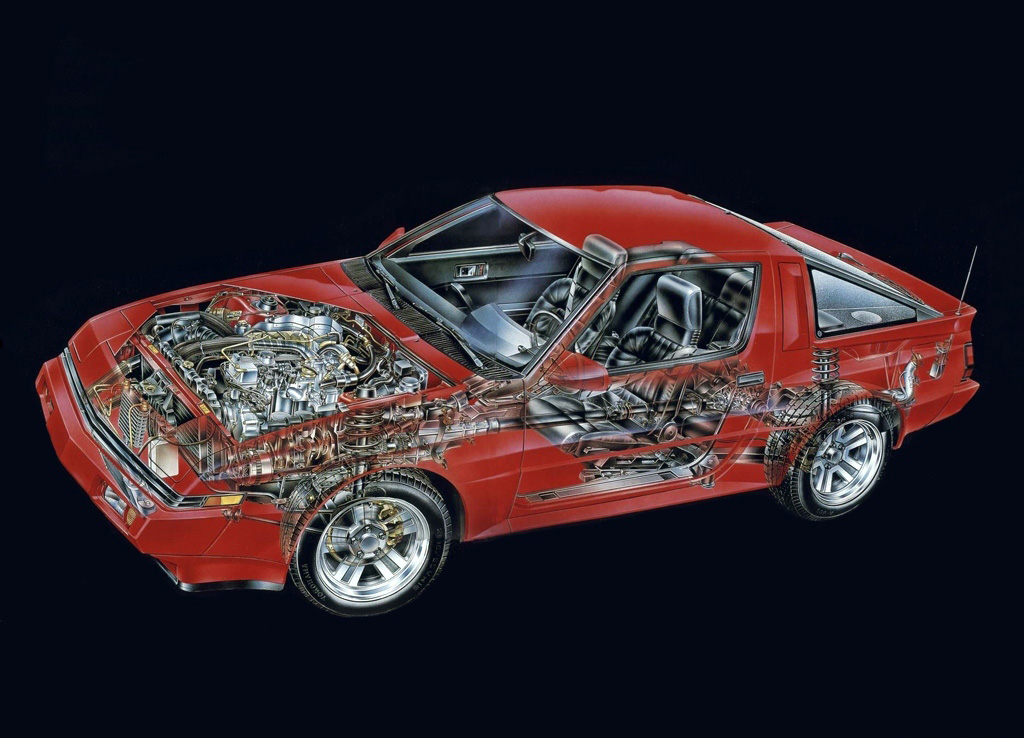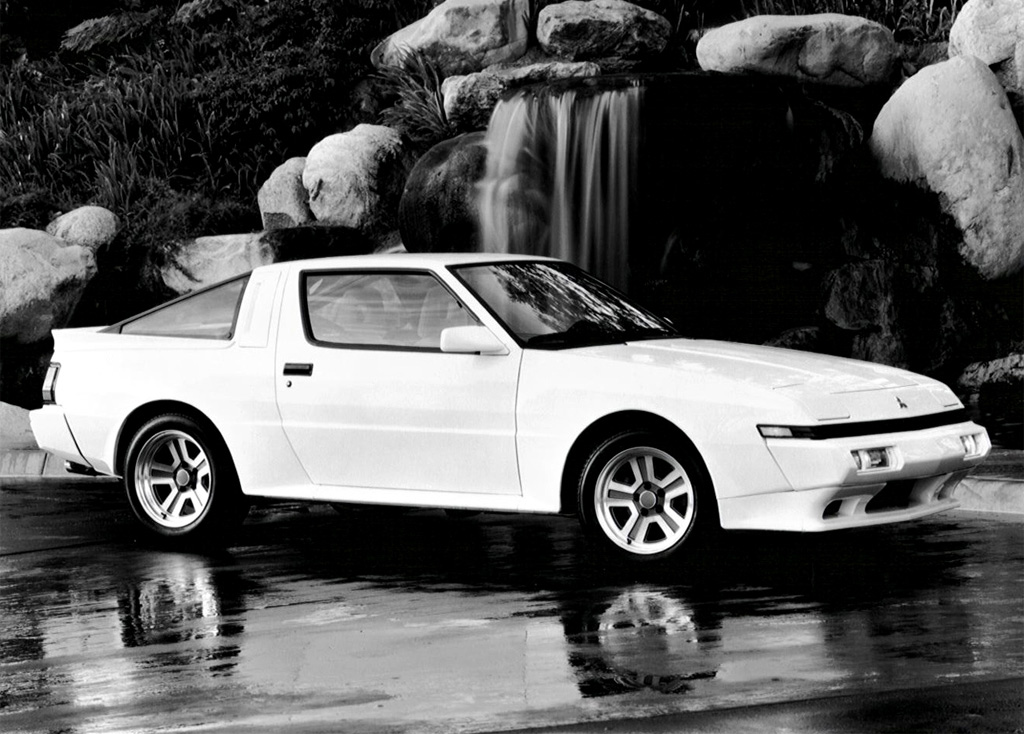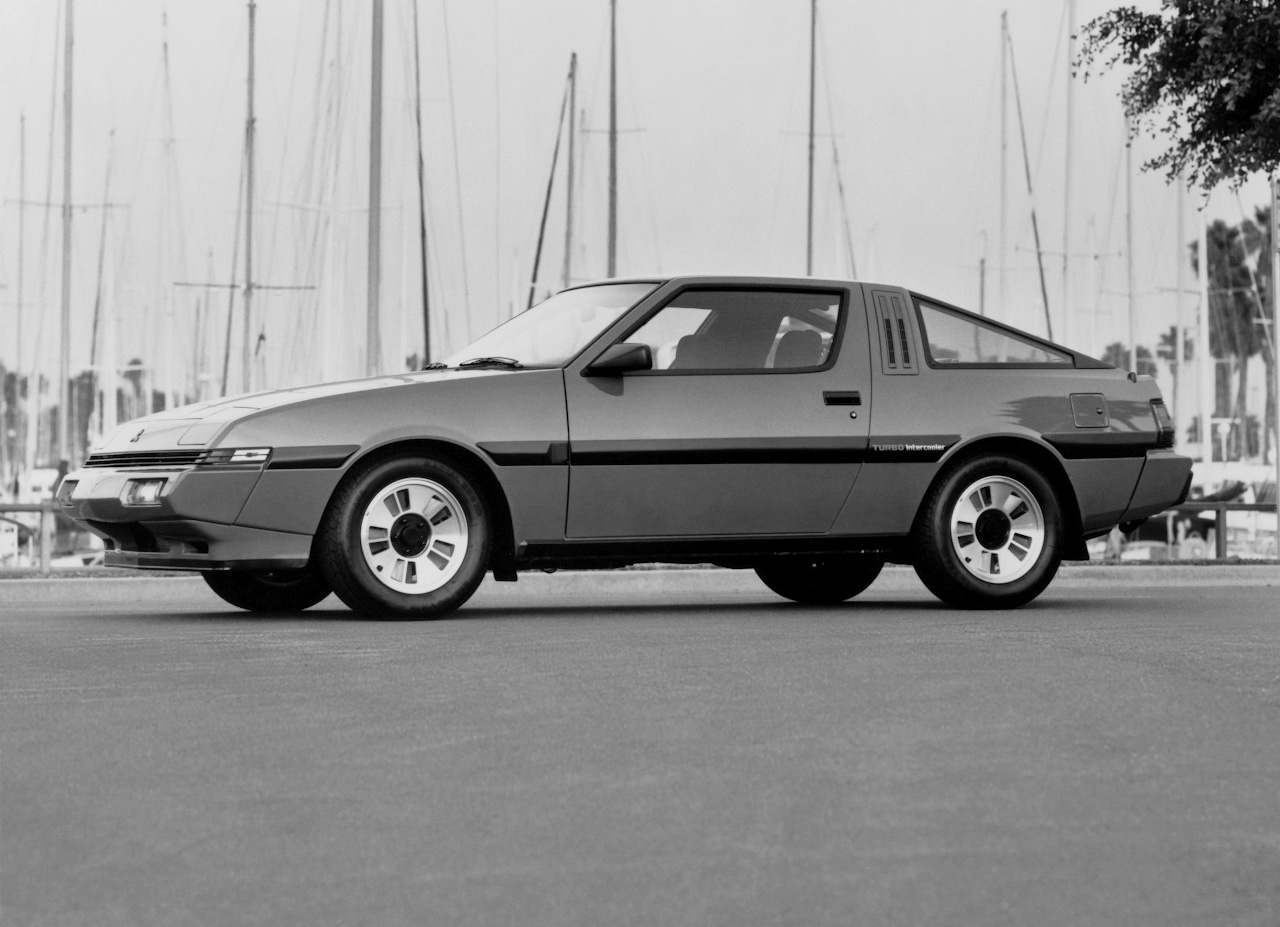Media | Articles
Why Are Mitsubishi Starions still so cheap?
About 15 years ago I bought a clean, good running 1988 Mitsubishi Starion ESI-R for $1900. It’s a car I had lusted after when they were new with their turbocharged four-cylinder, bulging bodywork, and staggered deep dish five-spokes, but I hadn’t given them much thought for a couple of decades. Then I spotted a nice one on the Santa Monica freeway and found myself shopping the internet a few hours later. I couldn’t believe how cheap they were.
I found the car for sale on a forum, probably Starquestclub.com. It was up in Pebble Beach, if you can believe it. The guy lived just a 17-mile drive from the Pacific. After a quick test drive, I drove it home to Los Angeles without any problems, replaced a few bits, including the clutch and flywheel, enjoyed the snot out it for a couple of years and sold it for $2800. My wife was glad to see it go. I wasn’t.
Recently, with the booming interest in performance cars from the 1980s and 1990s, I’ve begun to look for another, and once again, I’m shocked at how cheap they are. Starions and Conquests have always had a strong but small following, and interest hasn’t expanded as rapidly over the years as it has for some other models.
These rear-wheel drive cars are underappreciated compared to many of their V-8-powered contemporaries like IROC Camaros and 5.0 Mustangs. They also haven’t caught a wave of recent interest like the fourth-generation Supras and other Japanese performance machines that came a bit later.
Starquests seem to be caught in between those two genres, which is keeping them affordable. Prices remain in the same neighborhood as their many comparable Japanese rivals of the time like the Nissan 280ZX, second-gen Mazda RX-7 Turbo and Toyota Celica Supra.
Marketplace
Buy and sell classics with confidence
What is a Starquest?

These cars are referred to as Starquests. This is because they were sold as the Mitsubishi Starion and the Dodge (and at some point Plymouth) Conquest, which became the Chrysler Conquest in 1986. They’re all essentially the same, aside from badging and a bit of trim, and they were all built on the same assembly line in Japan. According to Mitsubishi, the name Starion isn’t a play on the word Stallion, which has often been reported. It’s a combination of star and Arion, Hercules’ horse in Greek mythology.
Sales began in 1983, but the intercoolers and widebody design didn’t come until later. The early cars, which are referred to as narrow-bodies or flattys, were turbocharged, however. The first year, they also wore a sizable but fake hood scoop and a couple of hood vents.
The 2+2 hatchbacks were powered by a SOHC 2.6-liter with a Mitsubishi turbo making 7.5 pounds of boost. The engine was rated for 145 hp at 5000 rpm and 185 lb-ft of torque at 2500 rpm. Pretty beefy in the early 1980s, especially for a four-cylinder. They hit 60 mph in nine seconds.
Then in 1986, things got good. Mitsubishi added an intercooler, wider wheels and tires, and flared the fenders, just as Porsche had done with its 944. These widebody versions are called the Starion ESI-R and Conquest TSI, and they remain the most desirable of the Starquest coupes. Sales would last until 1989. A five-speed manual was standard, but some cars got a four-speed automatic.


Power jumped to 178 hp and 223 lb-ft. of torque, still at just 2500 rpm, and its 0-60 mph time dropped to 8.1 seconds, considerably quicker than a Nissan 300ZX turbo, which had two more cylinders. And at around $17,500, the Starquests were less expensive than the Z, the Mazda RX-7 Turbo, and the Porsche. In 1988, Mitusubishi’s engineers found another 10 hp and 11 lb-ft of torque.
With its independent suspension, limited-slip differential, and staggered 16-inch wheel and tires, 205/55VR16 in front and 225/50VR16, they also managed to out-handle the Porsche in some testing. And they were successful on the racetrack. In 1987, a Starion ESI-R won the SCCA’s Escort Endurance Series road racing championship and the 24 Hour Race at Nelson Ledges. Four-wheel disc brakes were also standard, and in 1988 Mitsubishi and Chrysler offered a Sport Handling Package with eight-way adjustable shocks and wheels wider by one inch.
Although their performance was impressive in the late 1980s, by the early 1990s, the 300ZX Twin-Turbo, Supra Turbo, and FD RX-7 were cranking over 300 hp. They could easily outrun and out-handle the Starquest twins, which quickly pushed them off the radar screens of most enthusiasts. Plus, the Starion and Conquest only lasted one generation, so the nameplates didn’t last very long.
Offering turbocharged all-wheel-drive performance more than a decade before the Subaru WRX, the Starion’s successor, the Mitsubishi Eclipse, and its triplets, the Plymouth Laser and Eagle Talon, had a larger impact. The second-generation Eclipse became such an important car on the street scene, it was chosen to be Paul Walker’s character’s first ride in The Fast and the Furious.
Common mods

Since these cars have remained so affordable for so long, and many are now in the hands of their umpteenth owner, modifications are common. Many cars out there are lowered with larger-than-stock wheels and tires. It’s also easy to crank up the boost for more power, and by this point, many have been upgraded with more durable aftermarket engine internals. It’s common for the 2.6-liter’s balance shafts, which was tech Mitsu licensed to Porsche for the 944 and 968, to be eliminated during the rebuild process, and many owners install lighter flywheels so the engine revs more quickly.
LS swaps have also become prevalent over the last 10 years. In fact, the most famous Starquest in the world is probably the LS-powered Starion owned and built by John Lazorack. He and the car compete successfully in the Optima Ultimate Street Car Invitational and have been featured all over the internet and in many magazines.
A common body mod is adding the scooped hood from a 1983 model. I did this to my Starion and it’s a cool addition to any widebody model. To stiffen the chassis, many owners add a triangulated under-hood strut tower brace and rear strut tower bar. Replacement parts and aftermarket support are plentiful.
What an owner says

Hagerty contributor Mike Bumbeck already owned an Evo 8 when he bought his white 1987 Mitsubishi Starion ESI-R for $3000 in 2004. He was living in Southern California at the time. When he moved to Vermont in 2015, he took the Starion with him, and he’s still enjoying his classic in the summer months.
“The car’s combination of maximum ‘80s style, rear-wheel drive, and turbo four-cylinder power got me searching,” he told us. “My favorite part of the car is its widebody flared fender styling, and the leather interior is loaded with the highest possible level of ‘80s technology, from the AM/FM cassette stereo and nine-band equalizer to digital climate control.”
Bumbeck’s car had been driven just 73,000 miles when he bought it. Now it has covered 123,000 and he’s made a few modifications over the years, such as a heavy-duty three-row radiator, GM-Rochester fuel injectors, and a custom fabricated turbo-back 2.5-inch exhaust system. Bumbeck also added urethane sway bar bushings and says the car slays long sweepers.
“I had some other aftermarket stuff on it,” he says. “But it all broke, so I put the OEM parts back on.”
Starquest values today

Prices for the widebody cars are rising. “For years you could buy the nicest one in the country for $5000–$7000, but that’s changed recently,” says Bumbeck.
Now those numbers will buy you a generally clean, but modified example with high mileage. Well-cared-for drivers in #3 Good condition, still rolling on their stock five-spokes, can still be found for less than $10,000. Projects with issues and some rust are about $2500.
Meanwhile, the lowest-mileage, best-preserved examples have shown signs of serious appreciation. Back in March of this year, a perfect 1988 Conquest TSI five-speed with 40,000 miles and the rare Sport Handling Package sold on Bring a Trailer for $27,000. However, sales at this level haven’t repeated. Not yet. In July, another very clean, two-owner 1986 Starion ESI-R with light wear and tear appeared on BaT. The 45,000-mile example had no modifications, but only bid up to $9350. It was a no-sale.
At their current values, Starions and Conquests are a great option for any enthusiast looking to get into the Japanese classic scene on a budget. A smartly modified or acutely preserved Starquest widebody would be welcome at most events around the country, from the Japanese Classic Car Show in Long Beach, California to any local Cars and Coffee. Plus, it’ll probably be the only one there. And that’s always cool.



Hola : Tengo un Mitsubishi Starion y agradezco la publicación sobre éste auto. Aún puedo disfrutarlo.
Aunque tengo un inconveniente .. necesito INJECTORES. No sé donde conseguirlos. Estoy buscando por internet y creo que ya no los fabrican.
Si acaso puedan ayudarme .. les dejaré los datos del auto .. Mitsubishi Starion del año 1985, motor 4G63, Turbo, 2000 cc, con Sistema de Inyección ECI.
Agradeceré toda información.